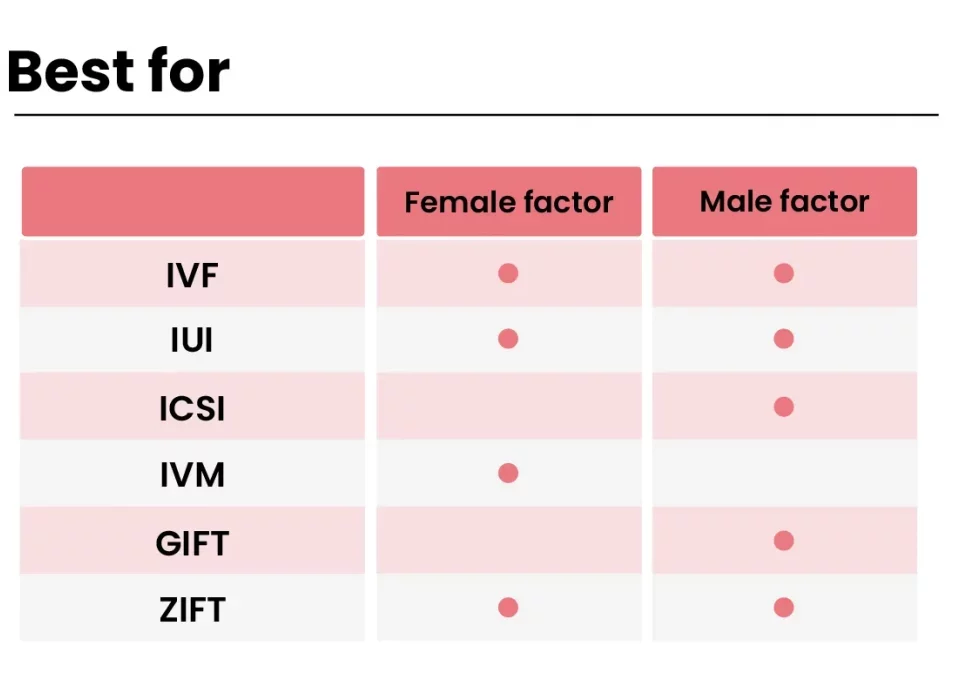
Can You Choose Gender with IVF?
April 2, 2025
How Long Does IVF Take? Your Complete Guide to the Timeline
April 2, 2025How to Get IVF Covered by Insurance

How to Get IVF Covered by Insurance
Starting a family can feel like a dream come true—until you hit the roadblock of infertility. For many, in vitro fertilization (IVF) is the golden ticket to parenthood, but the price tag? It’s a gut punch. A single cycle can cost between $12,000 and $25,000, and that’s before extras like medications or additional rounds. If you’re wondering how to make this dream affordable, you’re not alone. Insurance coverage for IVF is a hot topic, and with the right know-how, you might just unlock the door to financial relief.
This isn’t your average guide. We’re diving deep into the nitty-gritty of getting IVF covered—think practical steps, insider tips, and fresh angles you won’t find in every other article out there. Whether you’re navigating employer plans, state laws, or even military benefits, we’ve got you covered with real-world advice and the latest insights. Let’s break it down and get you closer to that baby bump—without breaking the bank.
Why IVF Coverage Matters More Than Ever
Infertility affects about one in seven couples in the U.S., and that number’s climbing as people delay starting families. IVF has become a lifeline, with over 85,000 babies born through assisted reproductive technology (ART) in 2021 alone, according to the U.S. Department of Health and Human Services. But here’s the kicker: most insurance plans treat IVF like a luxury, not a necessity. That leaves families footing a bill that could buy a car—or even a small house.
The good news? Things are shifting. Public demand for fertility coverage is growing louder, and policymakers are listening. In February 2025, President Trump signed an Executive Order pushing for better IVF access, signaling a potential wave of change. On social platforms like X, people are buzzing about affordability, with some calling it a “basic human right.” So, how do you tap into this momentum and get coverage for yourself? Let’s start with the basics.
Understanding Your Insurance Landscape
Before you can score coverage, you need to know what you’re working with. Not all insurance plans are created equal, and IVF coverage depends on where you live, who you work for, and what type of plan you have. Here’s a quick rundown to get you oriented:
Private Insurance: The Employer Factor
If you’ve got insurance through your job, your chances of IVF coverage hinge on your employer’s choices. Only about one in four U.S. employers offers fertility benefits, according to a 2024 NPR report. Big players like Google and Apple paved the way by adding IVF to their packages, but smaller companies? Not so much.
- Self-Funded vs. Fully Insured Plans: If your employer “self-funds” their plan (common with big companies), they call the shots on coverage—and state laws don’t apply. Fully insured plans, on the other hand, follow state regulations, which might mandate IVF coverage depending on where you are. Check your plan’s “Summary of Benefits” or call HR to find out which type you’ve got.
State Mandates: Your Location Could Be a Game-Changer
As of April 2025, 20 states have some form of infertility coverage mandate, but only 10 require “comprehensive” IVF coverage with minimal restrictions. Think places like Massachusetts, Illinois, and New Jersey. These laws force insurance companies to cover at least part of your IVF journey—sometimes up to three cycles.
- The Catch: These mandates only apply to fully insured plans, not self-funded ones. And even in mandate states, loopholes exist—like excluding single folks or same-sex couples. Look up your state’s laws on Resolve.org for the latest scoop.
Public Insurance: Medicaid and Military Options
Medicaid rarely covers IVF—only New York mandates it as of 2025—but it’s worth checking your state’s rules. Military families, however, hit the jackpot. TRICARE covers IVF for active-duty members with specific conditions (like deployment-related infertility), and the VA expanded benefits for veterans in 2024. If you’re in the armed forces, dig into those perks—they’re gold.
Step-by-Step: How to Push for IVF Coverage
Knowing your starting point is half the battle. Now, let’s get tactical. Here’s how to make insurance work for you, broken down into actionable steps anyone can follow.
Step 1: Decode Your Current Plan
First things first—grab your insurance policy and a cup of coffee. You’re looking for terms like “infertility treatment,” “IVF,” or “assisted reproductive technology.” No luck? Call your insurance provider and ask these key questions:
- Does my plan cover any infertility services (diagnosis, meds, IVF)?
- Are there lifetime caps or cycle limits?
- What’s the pre-authorization process?
Pro tip: Record the call or take notes—dates, names, everything. Insurance reps can give conflicting answers, and documentation is your backup.
Step 2: Lean on Your Doctor
Your fertility specialist isn’t just there to run tests—they’re your secret weapon. Ask them to write a letter of medical necessity, proving IVF is your best shot at parenthood. Studies show mandated states see higher IVF use when doctors advocate (Journal of Assisted Reproduction Genetics, 2022). Include:
- Your diagnosis (e.g., blocked tubes, low sperm count).
- Failed cheaper treatments (like IUI).
- Why IVF is medically justified.
Submit this to your insurer—it’s ammo for an appeal if they say no.
Step 3: Appeal Like a Pro
If your claim gets denied (and it might), don’t give up. Appeals work—about 40% of insurance denials get overturned with persistence, per a 2023 Kaiser Family Foundation study. Here’s how:
- File Within Deadlines: Check your denial letter for a timeline (usually 30-180 days).
- Gather Evidence: Doctor’s letter, medical records, even state mandate laws if they apply.
- Write a Killer Letter: Keep it polite but firm. Sample: “IVF is my only viable option due to [condition]. Studies show it’s cost-effective long-term compared to repeated failed treatments.”
- Escalate if Needed: If round one fails, request an external review through your state’s insurance department.
Step 4: Negotiate with Your Employer
No coverage? Time to talk to HR. Employers are adding fertility benefits faster than ever—Mercer’s 2024 survey found a 15% uptick since 2020. Make your case:
- Highlight retention: “Companies like Starbucks save $3 for every $1 spent on fertility benefits via lower turnover.”
- Suggest a group effort: Rally coworkers to show demand.
- Point to competitors: If rivals offer IVF, your boss might feel the heat.
Insider Hacks to Slash IVF Costs
Even with insurance, IVF can sting. These under-the-radar tricks can lighten the load—some straight from real families who’ve been there.
Hack 1: Tap Into Flexible Spending Accounts (FSAs)
Got an FSA or HSA? You can use pre-tax dollars for IVF meds, co-pays, or even travel to clinics. In 2025, the FSA cap is $3,200—enough to cover a chunk of meds (around $3,000-$5,000 per cycle).
- How: Ask your clinic for itemized receipts; submit them to your FSA provider.
Hack 2: Hunt for Fertility Grants
Nonprofits like Baby Quest and the Tinina Q. Cade Foundation offer grants up to $15,000 for IVF. Eligibility varies, but many prioritize financial need or medical history. Apply early—funds run out fast.
Hack 3: Shop Around for Clinics
Prices vary wildly. A 2024 FertilityIQ study found some clinics charge $10,000 per cycle, others $20,000—for the same success rates. Call around, ask about package deals (multi-cycle discounts can save 20%), and check reviews on SART.org.
Quiz Time: What’s Your IVF Coverage IQ?
Think you’ve got this figured out? Test yourself with this quick quiz—and see where you might need to dig deeper.
- Does your state mandate IVF coverage?
- A) Yes, fully
- B) Yes, partially
- C) Nope
- Can you use an FSA for IVF meds?
- A) Yes
- B) No
- What’s the first step if your claim’s denied?
- A) Cry
- B) Appeal
- C) Switch plans
(Answers: Check your state on Resolve.org; A; B. How’d you do?)

The State Mandate Advantage: Does It Really Help?
Living in a mandate state sounds like a win, but does it deliver? Let’s unpack the data and real-life impact.
The Upside
A 2002 New England Journal of Medicine study found mandate states triple IVF use (3.35 cycles per 1,000 women vs. 1.21 in non-mandate states). More coverage = more access. Plus, clinics in these states transfer fewer embryos per cycle, cutting risky multiple births—a win for mom and baby health.
The Downside
Mandates aren’t perfect. A 2023 PubMed study showed racial gaps persist—Black and Hispanic women use IVF less, even with coverage, due to income and education barriers. And if your employer’s self-funded? You’re out of luck.
Real Talk
Take Massachusetts, a mandate pioneer since 1987. Couples there get up to six cycles covered, but out-of-pocket costs (like $2,000 for embryo storage) still pile up. It’s better than nothing, but not a free ride.

Military Families: Your IVF Edge
If you’re military, you’ve got unique options most civilians don’t. TRICARE and VA benefits are expanding, and they’re a game-changer.
- TRICARE: Covers IVF for active-duty with service-related infertility (e.g., injury or deployment). Three cycles max, but you’ll need a referral.
- VA: As of 2024, veterans with service-connected infertility get full IVF coverage—meds, cycles, even donor eggs.
Action Step: Visit your base’s health office or VA rep. Bring medical records and proof of service connection. One vet on X said it took six months to approve, but “worth every second.”
What’s New in 2025: Trends Shaping IVF Coverage
The fertility world’s evolving fast. Here’s what’s hot—and how it affects your wallet.
Federal Push
That 2025 Executive Order? It’s directing agencies to slash IVF costs within 90 days. No hard rules yet, but whispers of tax credits or subsidies are floating around X. Stay tuned—May 2025 could bring big news.
Employer Perks
Companies are jumping on the fertility train. A 2024 Mercer report says 45% of large employers now offer some IVF coverage, up from 30% in 2020. Small businesses are lagging, but pressure’s building.
Public Sentiment
X posts show folks want IVF covered like any other medical need. One user wrote, “If insurance pays for heart surgery, why not IVF?” It’s a vibe that could sway lawmakers.
Your Action Plan: A 30-Day Roadmap
Ready to make it happen? Follow this 30-day plan to maximize your shot at coverage.
- Day 1-5: Review your insurance policy. Highlight infertility sections.
- Day 6-10: Call your insurer. Ask about coverage and pre-auth requirements.
- Day 11-15: Meet your doctor. Get that medical necessity letter.
- Day 16-20: Submit a claim or request pre-approval. Keep copies.
- Day 21-25: If denied, draft an appeal. Use evidence from your doc and state laws.
- Day 26-30: Talk to HR. Push for better benefits if needed.
✔️ Bonus: Apply for a grant or check clinic discounts by Day 15 to hedge your bets.

Poll: What’s Your Biggest IVF Hurdle?
We want to hear from you! Vote below and drop a comment—your story could help someone else.
- A) Cost
- B) Insurance denials
- C) Finding a good clinic
- D) Emotional stress
Beyond Insurance: Creative Funding Ideas
Insurance isn’t the only path. These outside-the-box options can bridge the gap.
Crowdfunding Success
Sites like GoFundMe have funded thousands of IVF cycles. One couple raised $18,000 in 2024 by sharing their infertility journey—think heartfelt videos and updates.
Clinical Trials
Some clinics offer free or discounted IVF for research participants. Check ClinicalTrials.gov for studies near you—eligibility’s strict, but savings are huge.
Mini-IVF
This lower-dose approach cuts costs to $5,000-$7,000 per cycle. Success rates dip slightly, but a 2023 Mayo Clinic review found it’s a solid pick for younger patients.

The Emotional Side: Coping with the Process
IVF’s not just a financial grind—it’s an emotional rollercoaster. Insurance battles can amplify the stress. Here’s how to stay sane:
- Join a Community: Online groups on Reddit or Fertility Network UK offer solidarity. One mom said, “Hearing I wasn’t alone kept me going.”
- Set Small Goals: Celebrate wins like finishing an appeal, not just the big outcome.
- Lean on Data: A 2024 Stanford study found mindfulness cuts IVF stress by 20%. Try a free app like Calm.

